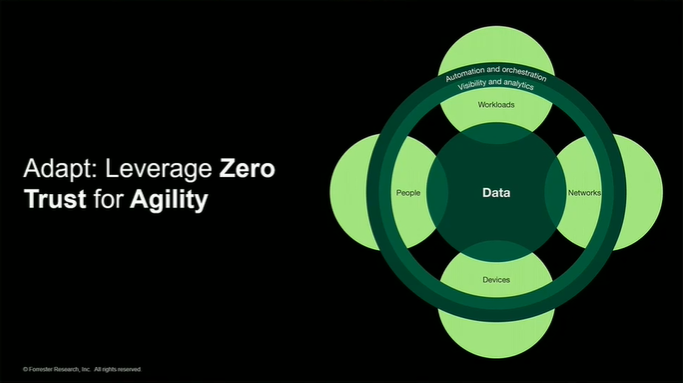
Exposed, unknown endpoints on an enterprise’s network are more than a security threat; they are a brand liability. This week, Forrester’s Security and Risk Summit made a compelling case for how technology trust is key to driving brand trust.
The sessions highlighted how an enterprise’s effectiveness at improving its security posture directly affects profits.
“Because when something touches as much revenue as cybersecurity does, it is a core competency. And you can’t argue that it isn’t,” Jeff Pollard, VP and principal analyst at Forrester, told the audience during a session.
CISOs face the challenge of consolidating tech stacks while supporting a growing base of endpoints and identities. Zero-trust network access (ZTNA) and zero-trust edge are core to zero-trust frameworks. In addition, zero trust does not have to be expensive to be effective, which was a pivotal point made during the event.

Zero trust makes every endpoint more trusted and agile, enabling enterprises to adapt quickly to customers’ changing needs. Source: Forrester’s Security and Risk Summit, 2022
Allie Mellen, a senior analyst at Forrester, noted during the event, “Zero trust goes hand in hand with trust. Because what you can do is make sure that all of your devices are secure and safe. And that even in a potential physical conflict, you must move your entire team out of the country. Suppose they leave a device behind,” she said. “You can manage that risk; you can wipe that device; you can make sure that nobody is going to get access to customer data on that device.”
Mellen underscored the need for every business to stay agile and adaptive to potential geopolitical risks.
“This is incredibly important as you think that you might have to move operations at a moment’s notice,” she said.
Securing anywhere-work endpoints
A session presented by Paddy Harrington, senior analyst at Forrester, highlighted several insights that organizations could use to protect their endpoints. CISOs and their teams need to adopt more effective mobile application management and endpoint management strategies to support anywhere-work scenarios, which are becoming so fluid.
Understanding whether an endpoint is trusted, tracked and known has a significant impact on revenue. On-premises endpoint protection platforms (EPPs) don’t provide the visibility enterprises need to secure and keep endpoint configurations current. That lack of visibility into endpoint health and status drains revenue.
“The on-premises deployments of endpoint protection showed their flaws, and one of the biggest flaws in this was a loss of visibility of what’s going on at the endpoint,” Harrington said.
The trend of enterprises moving to web apps, combined with record rates of bring your own device (BYOD) adoption, have made clear that on-premise EPP was not up to the new challenges enterprises are facing. Here are some ways enterprises can take on these challenges…
Read Full Source: VentureBeat
Originally posted on January 27, 2023 @ 3:19 pm
